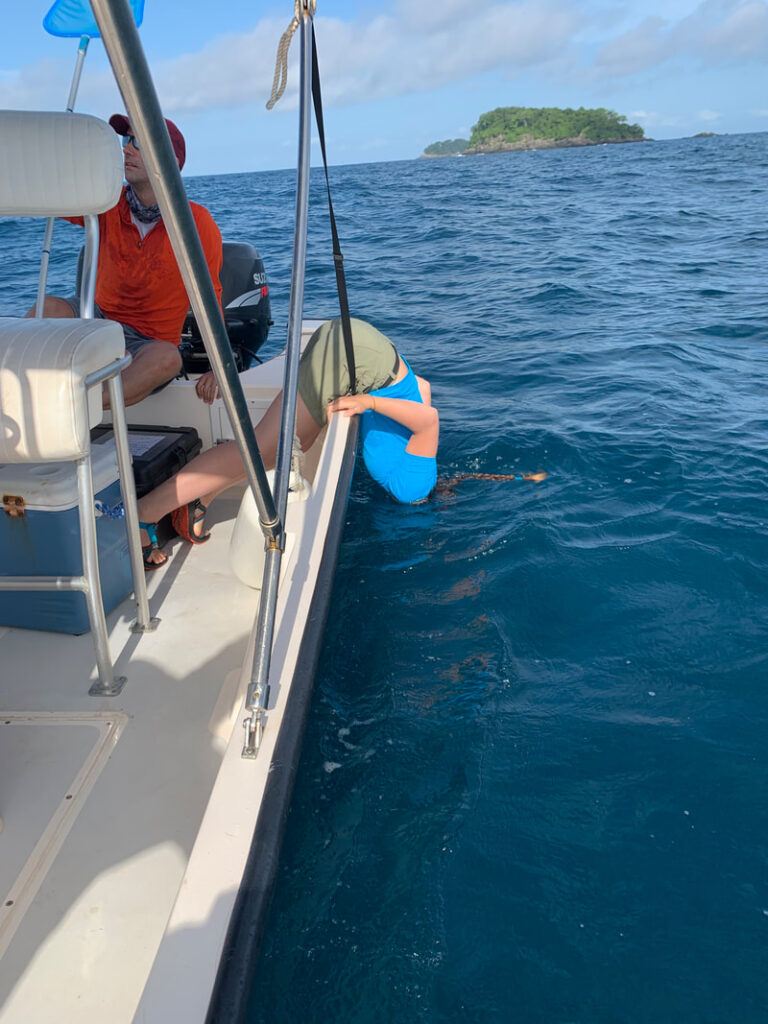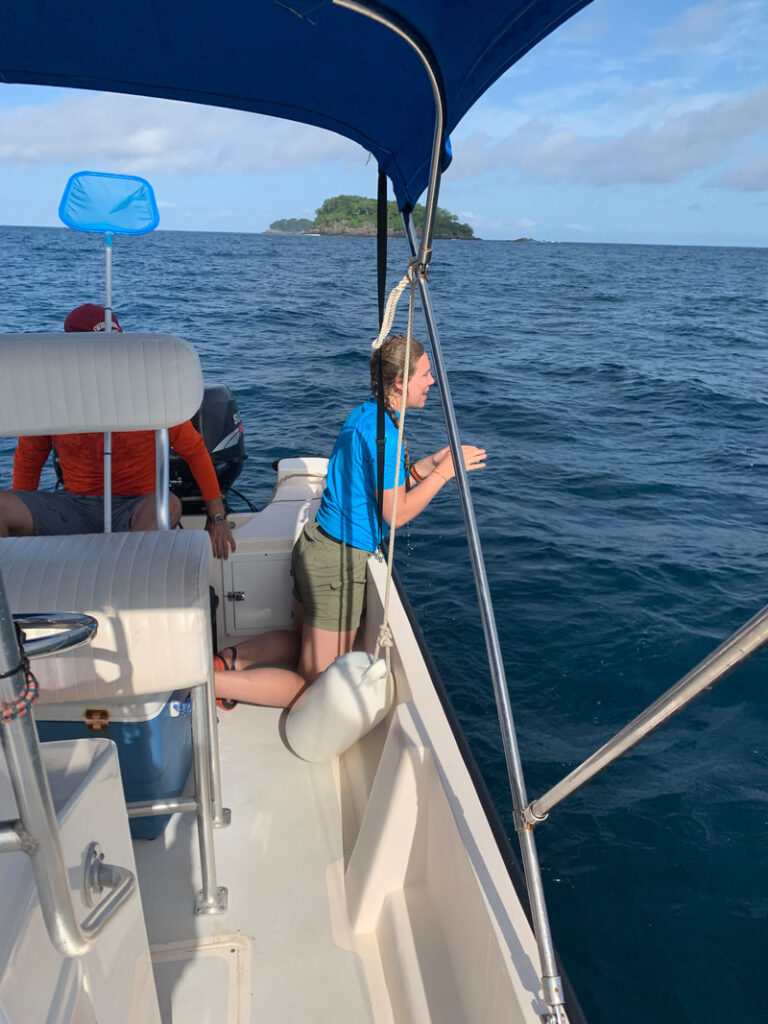by Shelby Rosten
The 2019 field season is underway and off to an awesome start! On our first day we encountered two competitive groups and collected fluke IDs from 20 individuals. Within each group there is one female and a bunch of males fighting for the chance to mate with her. We also saw some mom and calf pairs which were adorable.
The second day of the season yielded an incredible opportunity: hearing a whale’s song without a recorder! We had seen a whale from a distance and Pulo, our captain, brought us right to the spot where we saw it. When we arrived, we could hear his song through the hull of the boat. Matt, one of our team members, leaned over the side of the boat and stuck his head in the water to get a better listen. When he said that it was super loud underwater, I immediately wanted to try it and it was amazing.
Humpback whales sing complex songs composed of a hierarchy of elements called units, phrases, and themes. These elements are repeated in a consistent pattern to form songs and songs may be repeated for over an hour. All males in an area sing the same song, however, the song changes over time. While scientists are not sure exactly what the purpose of singing is, it is thought to be a way for the males to advertise their fitness to females in the area or to help male space themselves out in the environment. Because sound travels so well in water, this advertisement can be heard over vast distances and let all the females know that this guy is ready to mate. Over the past six months, I have been working on identifying the units present in songs from Islas Secas, Coiba National Park, and Islas Perlas. I was super excited to be able to hear these guys sing in real life. It’s like finally getting to go to a live concert of your favorite band! The grand finale to his performance was a beautiful breach right off the bow of the boat. If this start is an indication of what’s to come, we are in store for a fantastic field season!




